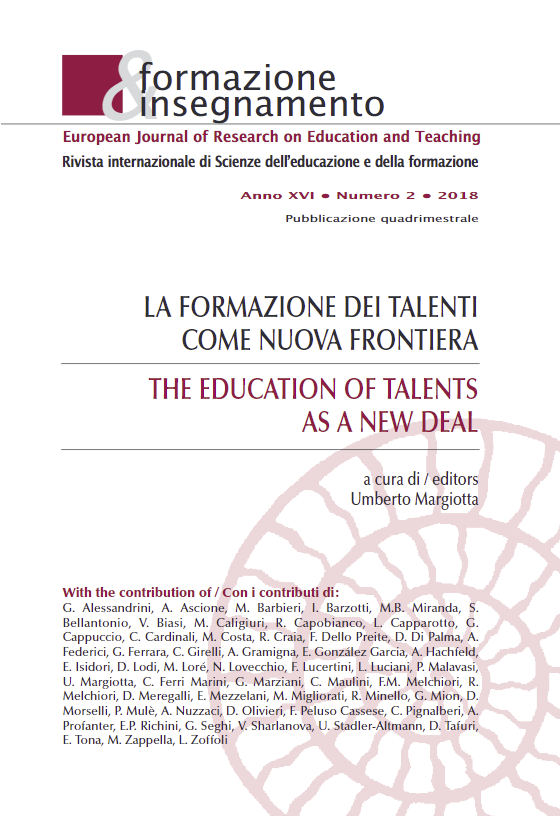Pet therapy nel contesto di apprendimento: effetti cognitivi ed emozionali
Resumo
Con l’intento di favorire l’apprendimento utilizzando l’intelligenza emotiva, l’introduzione degli animali come strumenti educativi sta divenendo, anche nel contesto scolastico, una pratica sempre più diffusa in Italia e in tutta Europa. La letteratura scientifica ha messo in luce come la relazione con l’animale, o pet, determini nella persona l’incremento dell’autostima e della coscienziosità, riducendo, quindi, il rischio di isolamento e recenti studi hanno evidenziato
che le abilità empatiche consentono agli individui di riconoscere gli stati mentali
ed affettivi altrui e, quindi, attraverso l’immedesimazione nell’esperienza emotiva vissuta da altri, permettono di rispondere adottando comportamenti efficaci ed adeguati alle diverse situazioni. Le interazioni sociali che si determinano facilitano perciò anche l’equilibrio emotivo migliorando la resilienza.
L’intento di questa indagine è stato quello di osservare come l’interazione interspecie tipica degli Interventi Assistiti con Animali (IAA) nel contesto educativo possa facilitare atteggiamenti empatici e contribuire allo sviluppo del fattore emotivo, non osservato solo nella sua dimensione intra-individuale, in cui il soggetto incrementa la consapevolezza di sé e sa auto-regolarsi, ma anche nella sua dimensione inter-individuale, nella quale il bambino è in
grado di riconoscere e comprendere le esperienze della vita personale e relazionale.
Downloads
Publicado
Como Citar
Edição
Seção
Licença
Copyright (c) 2018 Francesco Maria Melchiori, Isabella Barzotti

Este trabalho está licenciado sob uma licença Creative Commons Attribution 4.0 International License.
Formazione & insegnamento é distribuído sob a Attribution 4.0 International (CC BY 4.0).
Para obter mais detalhes, consulte nossa Política de Repositório e Arquivamento, bem como nossos Termos de Direitos Autorais e Licenciamento.





